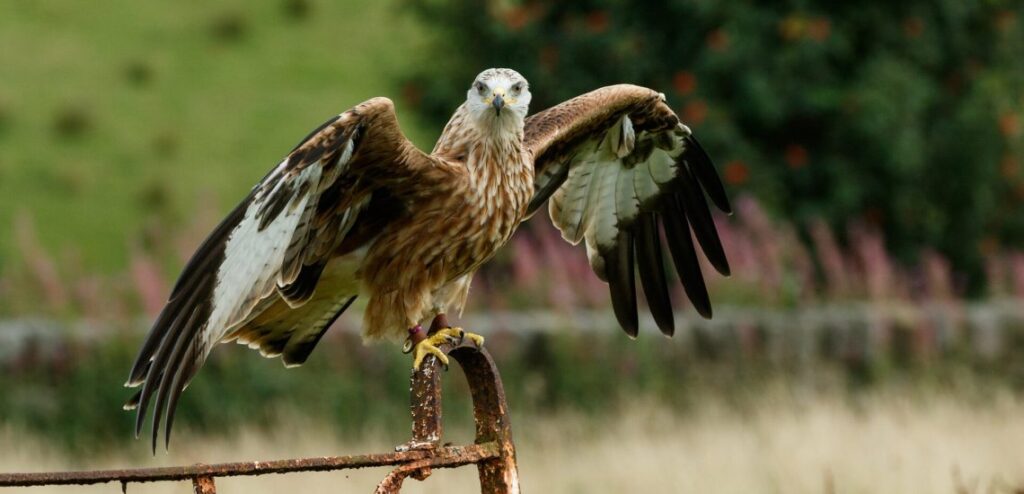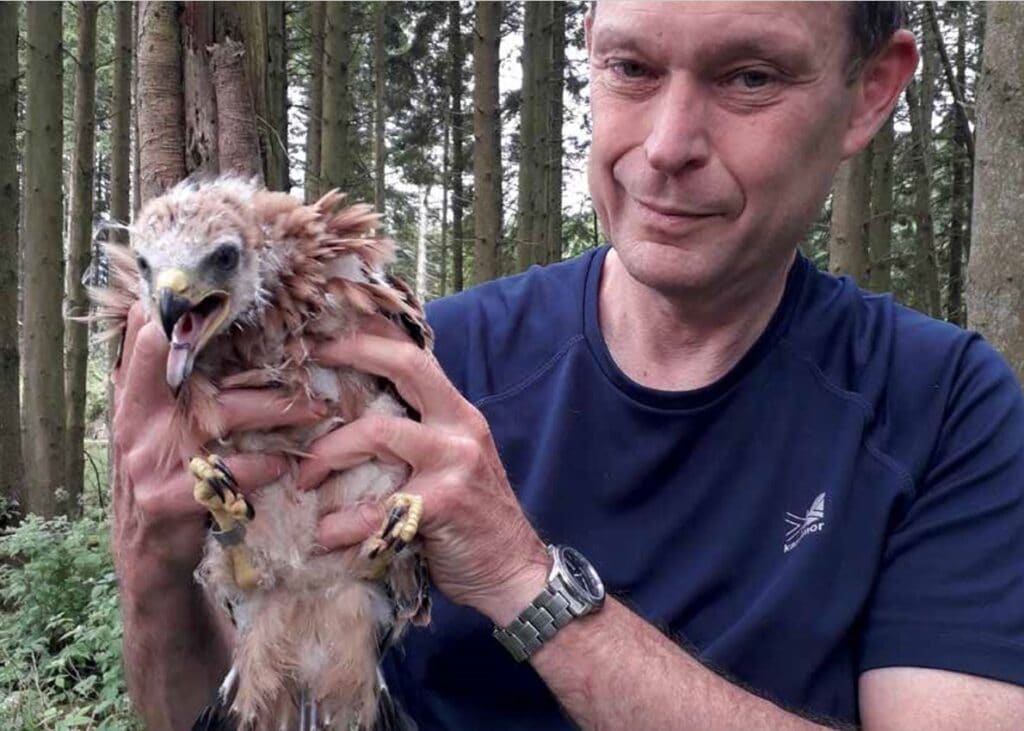Red List update: how we brought the Red Kite home to the UK

The 2020 Red List update showed that many raptors are now in peril. In more positive news, the Red Kite was downlisted to Least Concern, thanks in part to a wildly successful reintroduction program that saw the species return to England and Scotland after a century’s absence.
By Alex Dale
Shakespeare wrote of Red Kites – but not to praise them. In King Lear, the eponymous monarch dismisses his deceitful daughter as a ‘detested kite’, and later makes remark to the raptor’s habit of stealing laundry to line their nests with the line: “When the kite builds, look to your lesser linen.” Far from having an irrational hatred of raptors, however, the world’s most famous bard was simply capturing the mood of the time.
“In the 1600s, the Red Kite was probably the commonest raptor in the British Isles”, says Duncan Orr-Ewing, Head of Species and Land Management, RSPB Scotland (our UK Partner). “This was a species that thrived on the poor sanitation of the time, and we know they were common even in central London.”
There is a line of thinking that the ‘city of kites and crows’ mentioned in the play Coriolanus is a reference to the medieval London that Shakespeare knew in life. A London where the streets were paved not with gold, but with rotting food and carcasses – perfect conditions for an opportunistic scavenger such as Red Kite Milvus milvus. The species was widely dismissed as vermin, and indeed, King James of Scotland once decreed that they be “killed wherever possible”, but the species remained protected by law because – followers of the vulture crisis can stop us if this sounds familiar – they were prized for their efficiency in keeping the streets free of disease.
Times change – and sometimes for the better. Throughout the various lockdowns in 2020, the graceful overhead circling of Red Kites proved to be a daily highlight for members of the Cambridgeshire-based BirdLife magazine team. You would not dare imagine that these fork-tailed raptors had, at one point, disappeared from England entirely. For over 100 years.
“In the 1800s, Red Kites disappeared very quickly”, says Orr-Ewing. “Public attitudes changed as sporting estates emerged, the rise in popularity of taxonomy and specimen-collecting brought their own pressures, and bounties were paid out for raptor control”. The 1870s saw the last recording of a breeding pair in England and Scotland, and in Great Britain, by the turn of the 1900s the species only persisted as five breeding pairs in central Wales, growing slowly to just over 50 pairs in the 1980s. Even then, concerns abounded about the low rate of chick production by the Welsh kites.
Although the RSPB and local people had been working on the species since 1905, primarily to protect nests from egg collectors, it was clear a bigger vision was needed to ensure the species could thrive in the UK. Enter stage left what would become the world’s longest continuous conservation project.

In the eighties, the Red Kite was one of only three native UK species to be considered globally threatened, thus making it a priority species for the RSPB. In 1986, the RSPB and the Nature Conservancy Council (now Natural England and Scottish Natural Heritage) began to discuss the possibility of reintroducing the species back to England and Scotland. Such an effort could only be considered if a species met the IUCN guidelines on translocation, which state, among other criteria, that the human-created factors leading to the local extinction had been addressed, and that the birds chosen to be introduced were as genetically similar as possible to the former indigenous population. Ultimately, the proposal met these criteria, and the first birds were released in 1989, in north Scotland and Buckinghamshire.
Orr-Ewing joined the RSPB shortly after these releases, and recalls that the project yielded swift results. “For the Scottish end of the project, and for the first year in England, the birds was sourced from a healthy and expanding population in Skåne, Sweden. One of the reasons this group was chosen was if you look latitudinally, Malmo is roughly on the same line as Inverness”, says Orr-Ewing. “These birds were flown over by the RAF, which was momentous in itself – it was the first time any RAF plane had landed in Sweden since the end of World War II.”
The team estimated that they needed to introduce at least twenty birds annually to the chosen sites across England and Scotland if the populations were to establish themselves, with later birds imported in from Navarra, Spain. This happened sooner than expected. “We estimated the kites would begin breeding at the age of three, but actually most began at two years of age – and some at one, which was unprecedented”, says Orr-Ewing. “As soon as the population was reproducing, we could see it was on an ever-increasing trajectory.”
Indeed, the populations established themselves so rapidly, particularly in south England, that small numbers of English kites were used to establish populations in other parts of the country. Today, there are an estimated nearly 6,000 breeding pairs in Britain – around 15% of the world’s population – and growing.
Attention now turns to addressing the species’ decline in parts of continental Europe. Orr-Ewing is an advisor to the LIFE EUROKITE project, which advances the EU species Action Plan for Red Kite by using telemetry technology to identify the species’ movements, and document the main causes of mortality for the bird across the European Union, which hosts the vast majority of the species’ global breeding population. The main drivers will be familiar to long-term followers of our work in Europe: intensive agriculture and illegal killing. Big-scale issues with no quick-fix solution. The species’ downlisting to Least Concern is resolutely not a reason for the conservation world to cruise along as carefree as gliding kite.
However, translocation can help give a species a fighting chance, and Orr-Ewing highlights a reversal of fortunes that drives the point home. “There is a proposal to reintroduce the species to Extremadura and Andalusia, where they are now locally extinct. So, we have the bizarre situation where Red Kites are going to be taken from south of England and reintroduced to Spain – the country where the majority of the English population originate”. In any case, while the conservation world remains vigilant about the long-term prospects of the Red Kite, in Great Britain, at least, the future is bright for the species. London is a city of kites once again – and that truly is something to crow about.
“We estimated the kites would begin breeding at the age of three, but actually most began at two years of age – and some at one.”Duncan Orr-Ewyn, RSPB
Stay up to date
Sign up to receive the latest bird conservation news. You’ll also receive updates about our projects, science and other ways to get involved including fundraising.
Thank you for your support, we are committed to protecting your personal information and privacy. For more information on how we use your data, please see our Privacy Policy. You can unsubscribe from emails at any time by using the link in the footer of any email from us.

